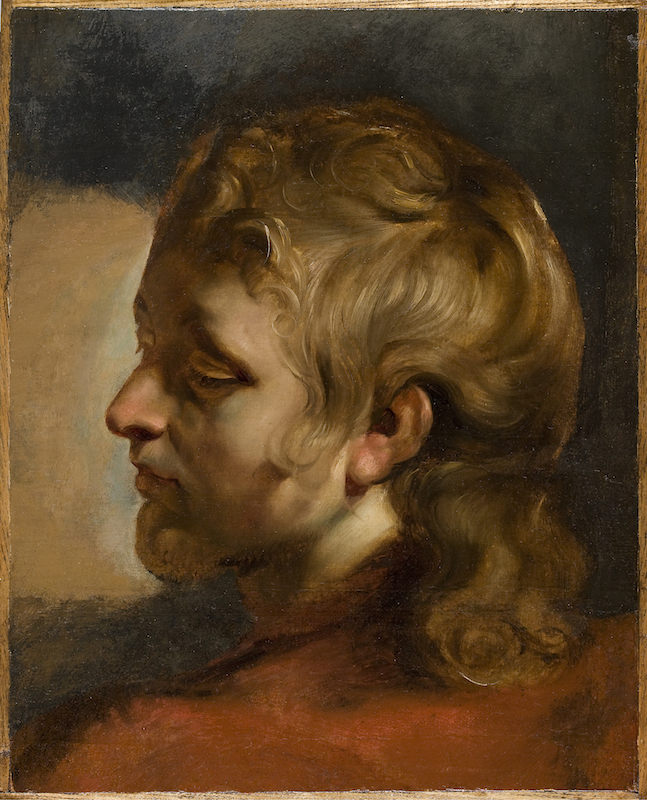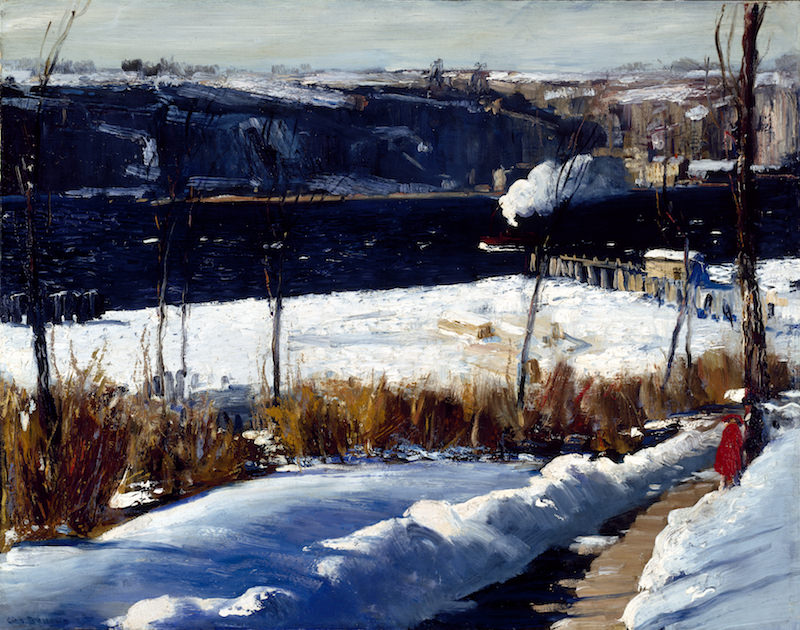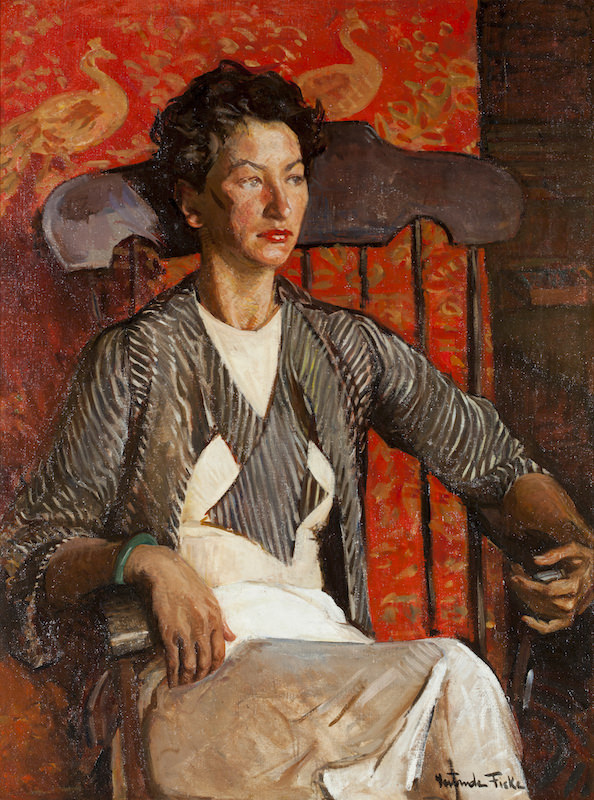
On a semi-annual basis I try to get down to South Florida to visit my mother, who at age ninety-four is in good health, though her memory lapses keep things lively; one night she ordered Cornish game hen for dinner, and was fully and genuinely surprised when poultry appeared at the table ten minutes later. West Palm Beach is full of surprises, not all of them so welcome. On this trip I was shuttled from the airport to a warm car rental facility, then stood in line for fifty minutes to get a Hyundai with stained upholstery and the smell of urine. That evening I encountered police in the hotel lobby who’d been called to look for a guest with a gun on the eleventh floor. Red lights, stop signs, and lane distinctions are viewed as civic nuisances; swept into the center of intersections is detritus from old smash-ups never fully removed. Just across the waterway is a congregation of seaside estates, and Mar-a-Lago. Amid the tropicana of wilting humidity and grand cloud formations, a small museum, the Norton, is tasked with providing cultural sustenance. In recent years I’ve enjoyed shows on Sylvia Plimack Mangold and Jenny Saville, a fine exhibition of New York cityscapes entitled Industrial Sublime, and loans of old master paintings.
Though not deep enough to qualify as a major collection, the Norton has a tidy holding of its own. A decade ago it received a bequest of dozens of works from a private donor, and a local paper made the cringe-worthy if jocular warning that the Metropolitan Museum “move over.” Just now the museum is undergoing renovation and expansion, and exhibition space is much curtailed, but there are still small pleasures. From across the European gallery I briefly mistook a study by Rubens for a Degas, not as absurd an error of recognition as one might think. If you squint hard at the image it could be a nineteenth-century French portrait in half-light. Rubens was ever explanatory, abundantly so—Van Gogh found his bombast, especially in religious subjects, dishonest—and his forms are ripe with life force. Even if, like me, you come to Rubens with reservations, Study for Head of St. John the Evangelist is admirable for its sensitivity. Baroque love of amplitude is reserved for the sumptuously arranged hair.

What’s on view from the American collection is also greatly pared. There are New York City scenes by George Bellows and Edward Hopper, contemporaneous stars when they studied with Robert Henri. Both artists outdistanced their teacher. One is fascinated to imagine how or whether they spoke to one another in Henri’s class. Bellows was Henri’s spiritual heir, a painter of magnificent brio and broad ambitions; Hopper, who later said it took him a decade to get over his charismatic instructor’s influence, retained his own solid, and stolid, vision. Both Winter Afternoon and August in the City depict Riverside Park, and each are good examples of their creators’ styles and sensibilities. Bellows is enthusiastic, Hopper terse. In Winter Afternoon, Bellows ran a series of parallel diagonals across the canvas: a line of dry foliage in the foreground, an inky swath of the Hudson River, and the Palisades on the New Jersey side. Bridging and breaking these planes are a pier and trees spaced at irregular intervals, the largest two forming bookends that frame the view. A too-conspicuous contrivance is the girl in a blazing red coat placed at far right. Another clue that the painting was at least finished in the studio is the experimental handling of snow in the middle distance, the white paint applied in more or less uniform dabs with a knife. Where Bellows disguises his plotted composition with vigorous handling, Hopper suppresses any gesture that could be mistaken for spontaneous performance. There’s a Yankee stoicism to paintings like August in the City that extends to the bland depiction of organic properties; Hopper’s trees are the least inspired by any great artist in the western lexicon. In his mature work the effect is often plain spoken and famously haunting for its lack of extraneous detail. Not so much this painting, which feels fussy and unusually oblique for a Hopper composition. The only surprise in this evocation of static summer heat is a gold sculpture simulating movement inside the ground floor apartment.
In past visits, lesser known works not currently on display caught my attention. One of them is Fairfield Porter’s Porch in Maine, on extended loan to the museum. Like Hopper, Porter didn’t respond easily to nature, per se—as in this canvas, one can search in vain for an emotional, let alone tactile conception of the artist’s wife, for she is flat in every sense. The vibrance in Porter’s painting was two-dimensional; he was moved by color and pattern, and it is through these mechanisms that his paintings breathe. Porch in Maine is animated by the juxtaposition of foliage and an architectural grid, and unified by the washed-out sunlight that filters into the porch.

Gertrude Fiske’s Anni may be my favorite painting in the museum. This strikes me as an odd choice, but small museums allow for eccentric preferences. Fiske is not particularly familiar, and the canvas makes strange bedfellows of seemingly unsympathetic patterns, but it hit me hard on first viewing and has grown on me since. Fiske came out of the Tarbell/Benson wing of the Boston School, which means the abiding influence was more impressionistic than the classical example of Paxton that has trickled down through various ateliers. While her teachers were invested in a fin de siècle idealization of the feminine subject, Fiske’s approach conveys the strength of the sitter’s personality. In place of conventional beauty, the subject has a dominating presence akin to that which Velázquez gave a Pope, an impression that’s underscored by both Anni’s posture—at once erect and slightly anxious, per the gesture of her left hand—and the scarlet wall hanging with its Whistleresque peacocks. All that heat necessitated some countermeasures, hence the cool blue-gray of the chair’s headrest, and Anni’s red lipstick, the most intense note in the painting. The challenge Fiske offered and resolved was to have the sitter hold her own amid a welter of distraction. The head, a tapestry of brushwork, is a solid quantity modeled in luminous tones and dramatically framed by a dark and fashionably unruly coiffure. This is a flawed painting: there’s too much carmine, the striped jacket is distracting and the right hand ends enigmatically in relation to the dress—it’s unclear which shape is overlapping which. But it’s a full-throated work, an image of one unapologetically independent woman painted by another, and it’s a hell of a lot more interesting than many a more controlled effort.
When time and finances allow, I’ll return to South Florida, land of rental cars and iguanas. I’ll break bread with my mother and find respite again from the heat at the Norton.



